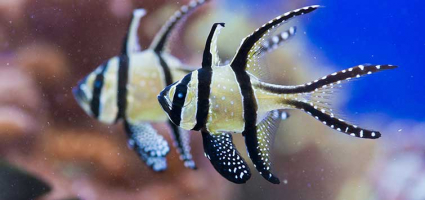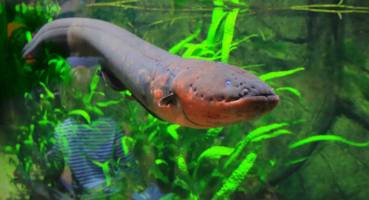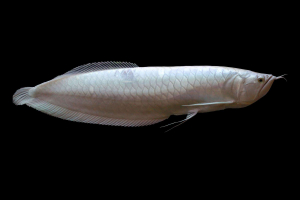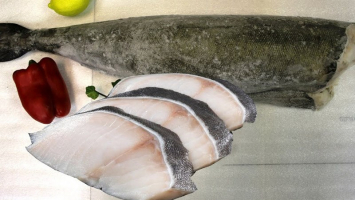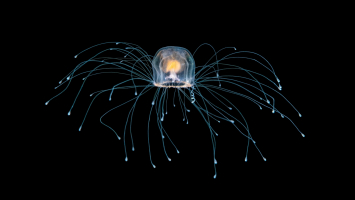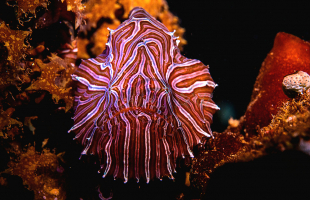Top 10 Largest Fish Species Living Today
There are so many different types of fishes in the world – some are shy and some friendly, some timid and some aggressive. Also, they are so colorful. You can ... read more...find fish in different sizes. Some fishes are very tiny, some are small, and some are medium-sized. Of course, there are also those that are big and then a few are huge. Here is a list of the largest fish species living today, let's find out!
-
The largest known extant fish species is the Whale Shark (Rhincodon typus), a slow-moving carpet shark that feeds on filters. The longest confirmed individual measured 18.8 meters in length (61.7 ft). The whale shark is the largest living non-mammalian vertebrate, and it holds several other records for size in the animal kingdom. It is the only living representative of the genus Rhincodon and the family Rhincodontidae, which is a member of the subclass Elasmobranchii of the class Chondrichthyes. It was categorized as a Rhinodontidae member before 1984.
The whale shark inhabits the open oceans of the tropics and is infrequently encountered in water that is colder than 21 °C (70 °F). Whale shark lifespans have been calculated to be between 80 and 130 years based on research on the growth rates of free-swimming sharks and vertebral growth bands. Only two other shark species—the megamouth shark and the basking shark—feed in a manner similar to that of whale sharks, which have very big mouths and are filter feeders. They don't pose a threat to people and eat mostly plankton and small fish. The name "whale shark" alludes to the fish's size, which can reach proportions comparable to some whale species, as well as its filter-feeding habits, which are comparable to those of baleen whales.
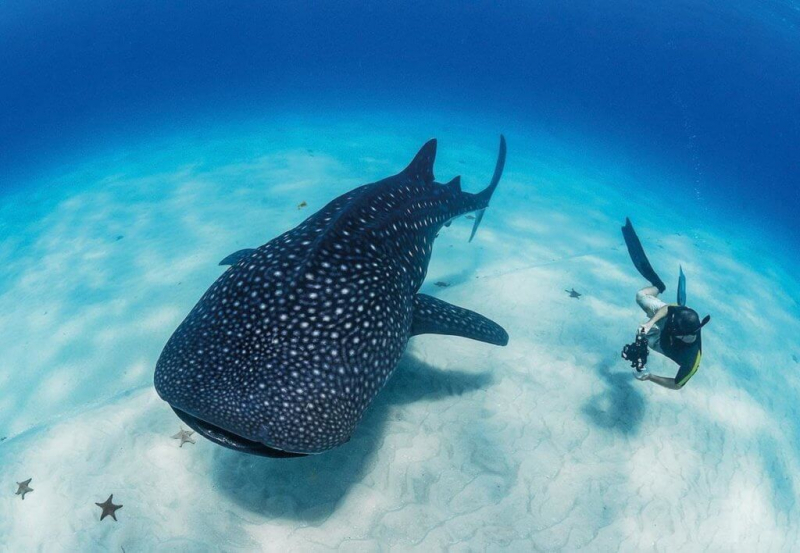
DIVE Magazine 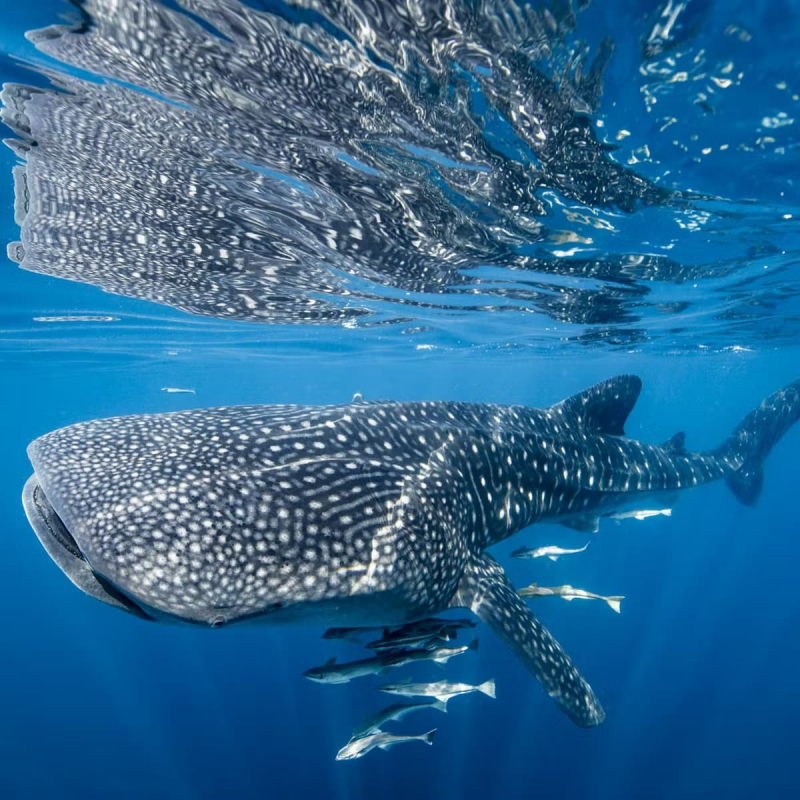
The Conversation -
The Basking Shark (Cetorhinus maximus) is one of three species of plankton-eating sharks, together with the whale shark and megamouth shark, and is the second-largest living shark and fish after the whale shark. The average adult is 7.9 meters (26 feet) long. Its skin is typically mottled and greyish-brown in color. The caudal fin is shaped like a crescent and has a robust lateral keel. Other common names for the species include sailfish, sunfish, bone shark, and elephant shark. Its popular name in Orkney is hoe-mother, which can be abbreviated to homer and means "the mother of the pickled dogfish".
The basking shark is a migratory species that can be found in all temperate oceans of the world. It is a slow-moving filter feeder, and its common name comes from the way it feeds—appearing to be basking in the warmer surface water—at the surface. Its anatomy has been modified to allow for filter feeding, including a significantly larger mouth and highly developed gill rakers. The gill slits circle the top and bottom of its head, and its snout is conical. Plankton is captured by the gill rakers, which are bristly and black and utilized to filter water past the mouth and over the gills. The teeth are many, tiny, and frequently there are 100 teeth in each row.
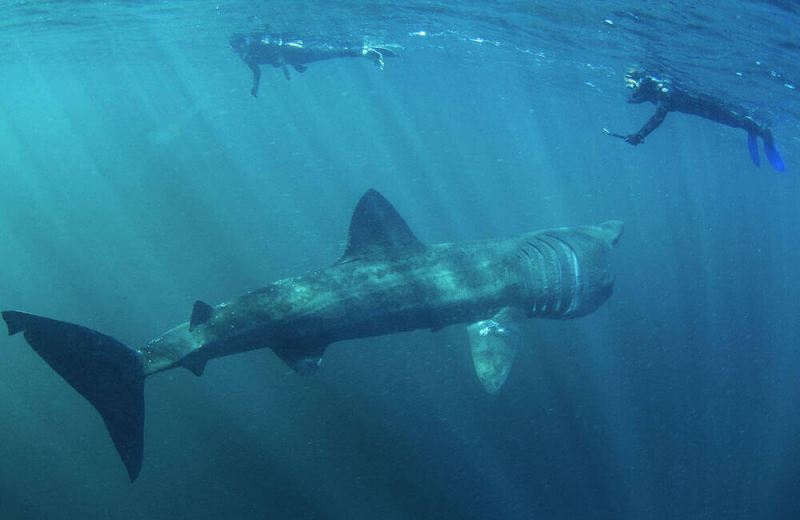
DIVE Magazine 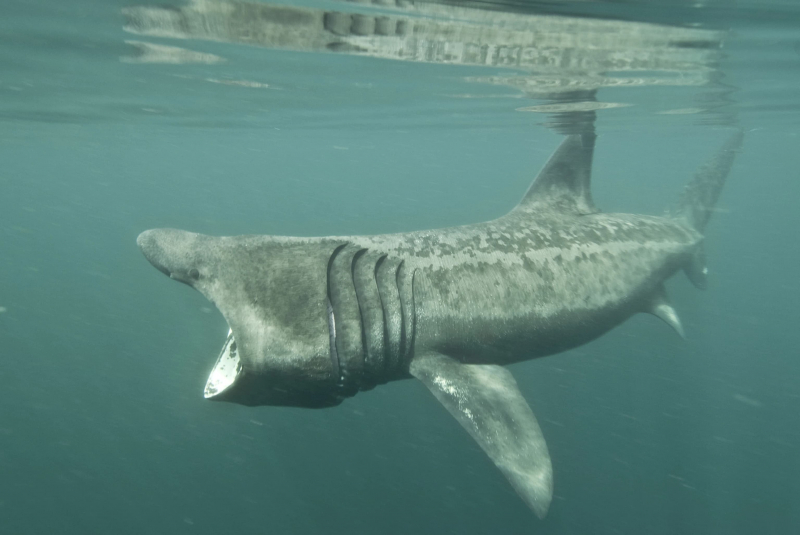
National Geographic -
The Great White Shark (Carcharodon carcharias), sometimes referred to as the white shark, the white pointer, or just the great white, is a species of big mackerel shark that is present in the coastal surface waters of all the world's seas. It stands out for its size, with larger females reaching lengths of up to 6.1 meters (20 feet) and weights of 1,905-2,268 kilograms (4,200–5,000 pounds) at maturity. Males often measure 3.4 to 4.0 m (11 to 13 ft) in height, while girls typically stand at 4.6 to 4.9 m (15 to 16 ft).
Aside from the orca in extremely rare instances, the great white shark has no other known natural predators, making it an apex predator. It is one of the main predators of marine mammals up to the size of huge baleen whales and is possibly the largest known living macropredator fish. In addition to fish and seabirds, this shark is known to feed on a range of other marine creatures. It is the only species of its genus, Carcharodon, that is still alive and has been implicated in more documented cases of human bites than any other shark. Numerous ecological difficulties that the species suffers have led to international protection. The great white shark is listed as a vulnerable species by the International Union for Conservation of Nature and is a part of CITES Appendix II. Several national governments, like Australia, preserve it as well (as of 2018).
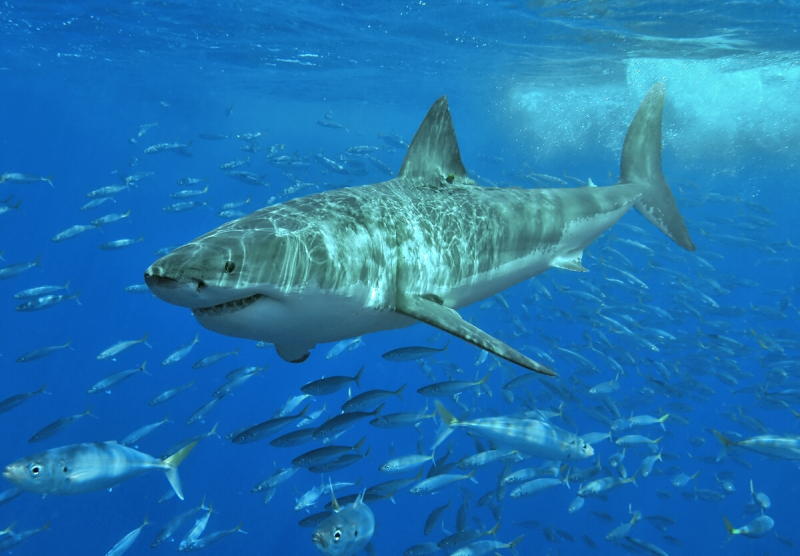
Wikipedia 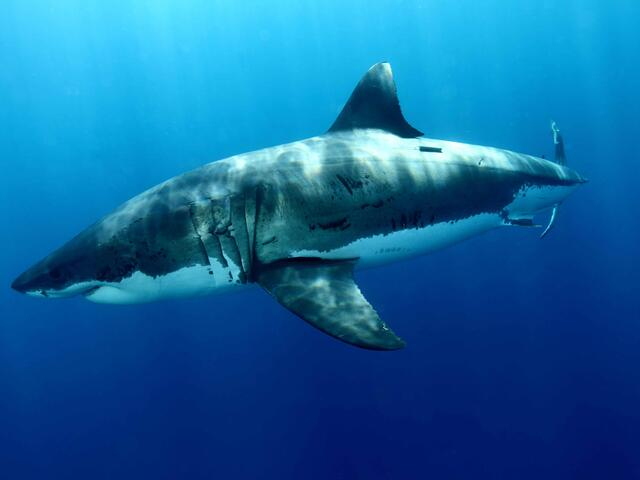
World Wildlife Fund -
The only remaining member of the genus Galeocerdo is the Tiger Shark (Galeocerdo cuvier), a type of requiem shark. It is a gigantic macropredator that may grow to a length of over 5 meters (16 ft 5 inches). Populations can be found in various tropical and temperate waters, particularly those near the islands in the central Pacific. The dark stripes running along its body, which at first mimic a tiger's pattern but gradually disappear as the shark ages, gave it its name.
The tiger shark hunts alone and primarily at night. The largest variety of prey among all sharks, including crabs, fish, seals, birds, squid, turtles, sea snakes, dolphins, and even other smaller sharks, makes it unique. It is also known for eating various inedible, man-made objects that stay on its stomach, earning the nickname "trash eater". Despite being top predators, killer whale pods occasionally hunt tiger sharks. Due to human fishing and shark finning, it is regarded as a nearly threatened species. Tiger shark attacks on humans have been recorded more frequently than those by great white sharks, but they are still incredibly rare.
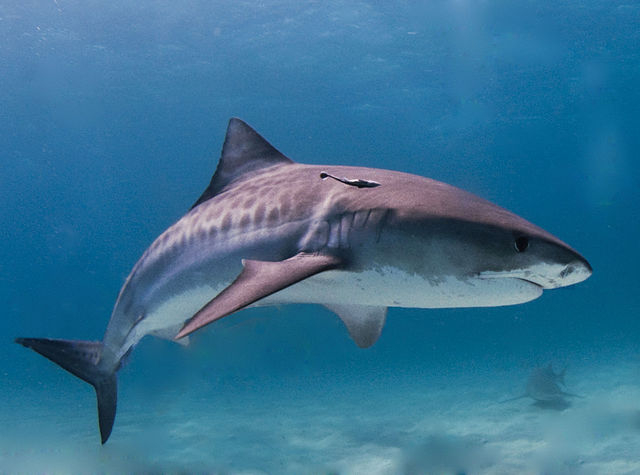
Wikipedia 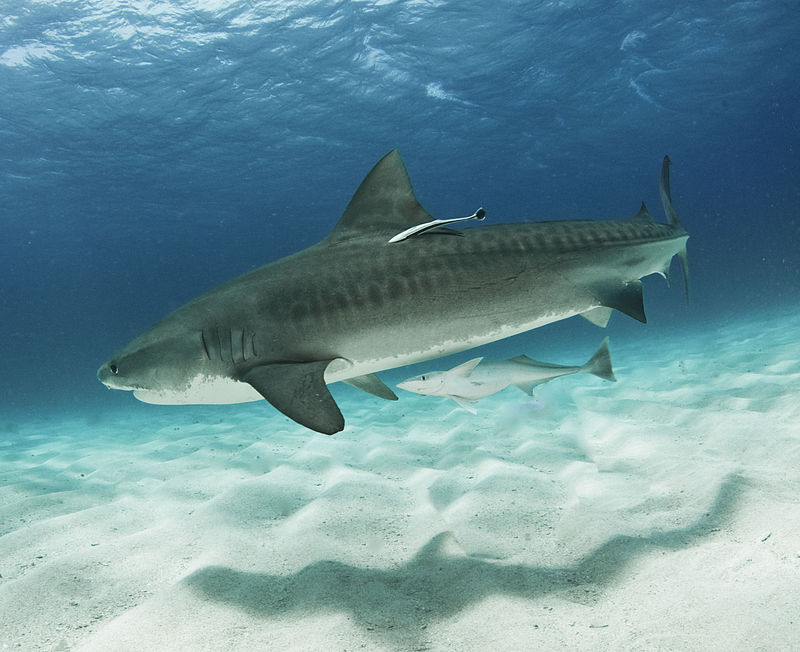
Wikipedia -
The largest kind of ray in the world is the Gigantic Oceanic Manta Ray (Mobula birostris), sometimes known as the giant manta ray or oceanic manta ray. Although it can be found in temperate seas as well, it is mainly found in tropical and subtropical regions. The species, along with the more diminutive reef manta ray, was categorized in the genus Manta up until 2017. Both species are more closely linked to rays of the genus Mobula than previously believed, according to DNA analysis. As a result, to better reflect the new classification, the big manta was given the new name Mobula birostris.
The huge oceanic manta ray can reach lengths of up to 9 meters (30 feet) and a diameter of 7 meters (23 feet), and it weighs roughly 3,000 kg (6,600 lb) although the typical average size is 4.5 m (15 ft). It features broad, triangular pectoral fins on either side of the disc and is dorsoventrally flattened. It has two cephalic fins, which are the pectoral fins' forward extensions, on the front. When swimming or when the animal is feeding, they can be flared out to direct water into the wide, forward-facing rectangular mouth.
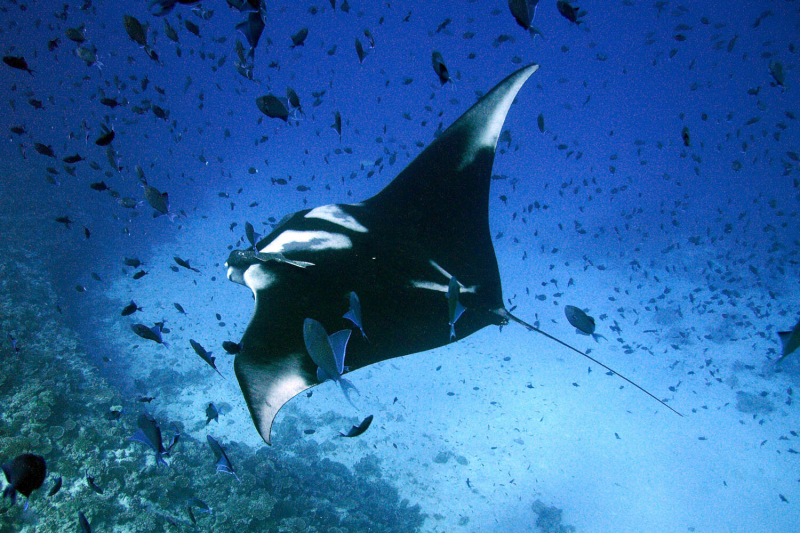
Manta Trust 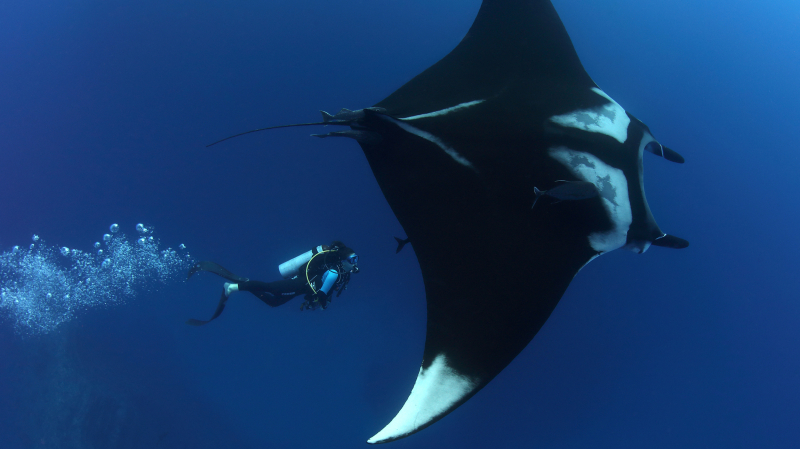
Oceanographic Magazine -
The Ocean Sunfish or common mola (Mola mola) is one of the two heaviest known bony fish in the world, the other being the southern sunfish (Mola alexandrini) of the same genus. The average adult weighs 247 to 2,000 kg (545 and 4,409 lb). The species is indigenous to both tropical and arctic glasses of water. Its main body is flattened laterally, and its head and tail resemble fish. When their dorsal and ventral fins are extended, sunfish can reach heights of as much as their length.
Small fish, fish larvae, squid, and crustaceans make up the majority of the diet of sunfish, which are generalist predators. Thought to be the main source of food for sunfish in the past, sea jellies and salps now make up only 15% of a sunfish's diet. Females of the species can lay up to 300,000,000 eggs at once, more than any other known vertebrate. With their enormous pectoral fins, tail fin, and body spines that are not typical of adult sunfish, sunfish fry resembles little pufferfish. Although adult sunfish have few natural predators that can harm them, sea lions, killer whales, and sharks will eat them. Some regions of the world, such as Japan, Korea, and Taiwan, prize sunfish as a delicacy. Regulations prohibit the sale of fish and fisheries products originating from the Molidae family in the European Union.
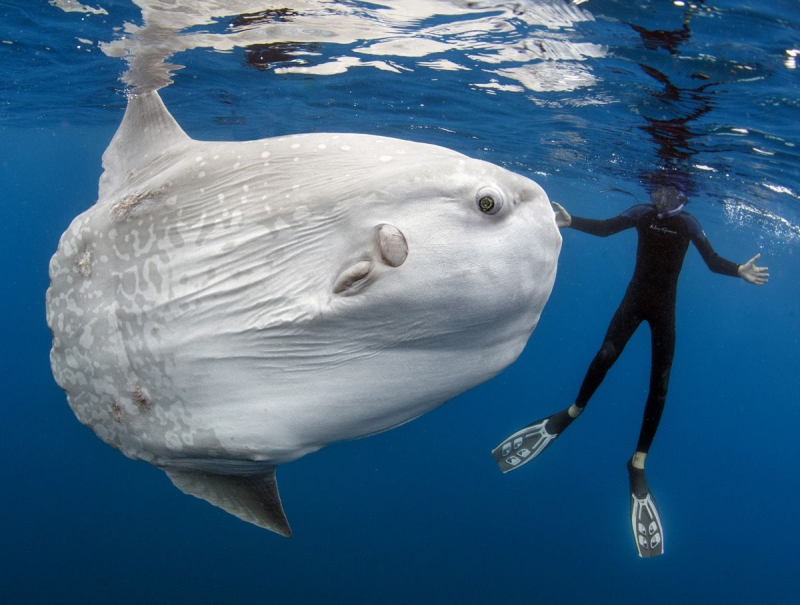
Live Science 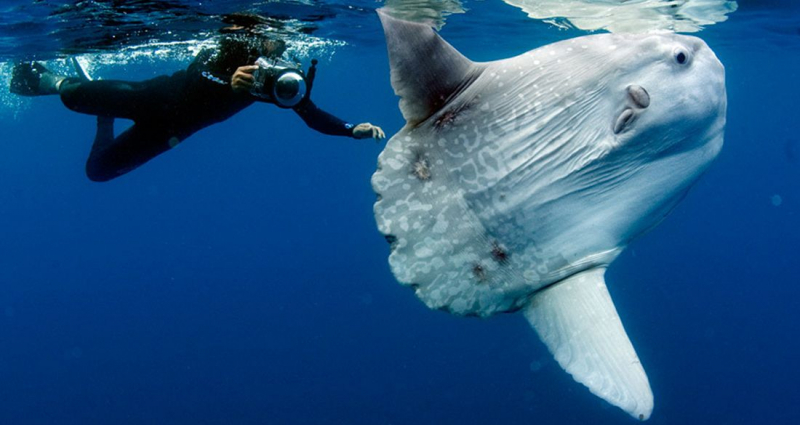
Flipboard -
A species of mola called the Sharptail Mola (Masturus lanceolatus) is seen in both tropical and arctic seas all over the world. It resembles the ocean sunfish (Mola mola) in appearance but may be identified thanks to a projection on its clavus (pseudo-tail). One of the largest bony fishes, the sharptail mola can measure up to 3.4 m (11 ft) long and weigh 2,000 kg (4,400 lb). Sharpfin sunfish, point-tailed sunfish, and trunkfish are a few more common names for the species. Very little is known about the biology or life history of the sharptail mola, which is extremely uncommon. Recently, it has grown in significance for the commercial fisheries that operate off eastern Taiwan. There is only one specie in this genus.
The sharptail mola mostly lives in the epipelagic zone and is rarely seen above the surface, where many of them look to be sick and parasitized. They prefer water temperatures above 20°C and spend most of the day at depths of 5-200 m (16-656 feet), but they frequently dive into deeper, cooler water, either in search of food or to evade predators. They spend the majority of the night between 100 and 250 meters (330 and 820 ft). They have been observed in the mesopelagic zone at depths of up to 670 meters (2,200 feet), although they may go down as far as 1,000 meters (3,300 ft).
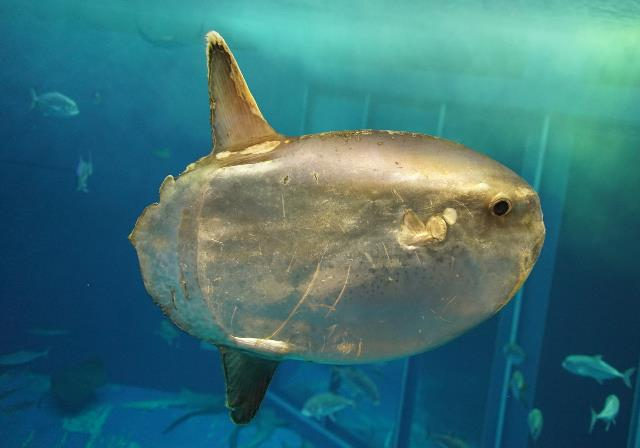
churaumi.okinawa 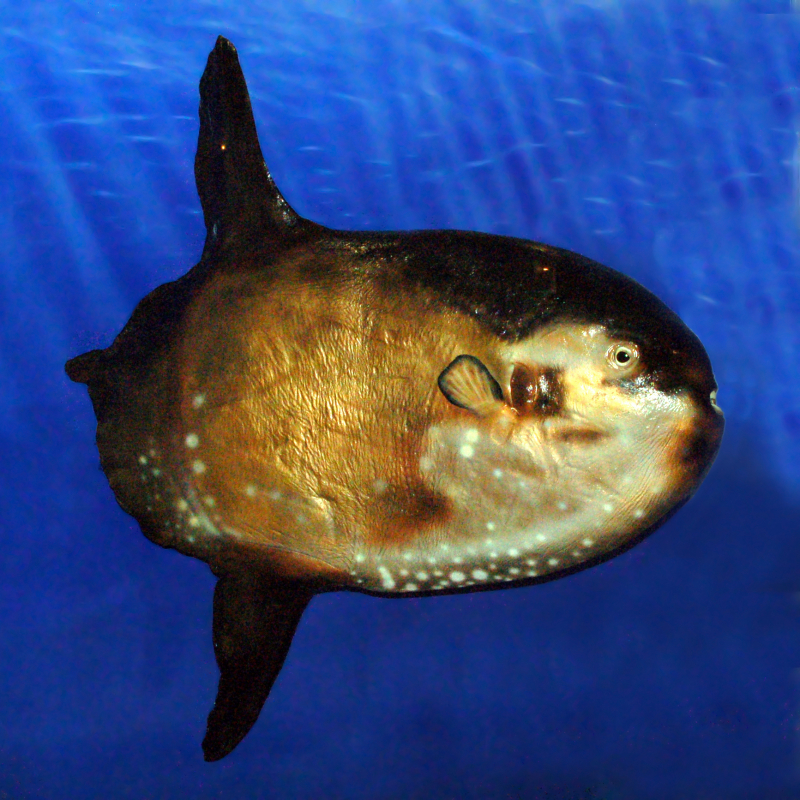
Wikipedia -
The Hoodwinker Sunfish, often known as mola tecta, is a member of the genus Mola and the family Molidae. It shares a family tree with the more well-known ocean sunfish (Mola mola). "Tecta" means hidden in Latin. The name was chosen because the fish, which has just lately been found, has long since merged in with other species of sunfish. It was the first new species of sunfish to be named in 130 years when it was found on a beach close to Christchurch, New Zealand, in 2015. The waters near Australia, New Zealand, Southern Chile, and Southern Africa are where mola tecta are most frequently found in the temperate zone of the Southern Hemisphere.
The more well-known ocean sunfish, Mola mola, is a congener of (and belongs to the same genus as) the hoodwinker sunfish. Like other Mola species, the Mola tecta has a flat, somewhat symmetrical oval form. Its sleek body is devoid of bumps, and its greatest length is 242 cm (about 7.9 feet). The counter-shaded Mola tecta, like other cartilaginous fish, has a darker hue on the dorsal side than on the ventral side. The Mola tecta are slimmer, have a smoother adult body form, and lack a prominent snout and bump along the tail fin when compared to other Mola species. It can weigh up to two tonnes and grow up to three meters in length.

The Santa Barbara Independent 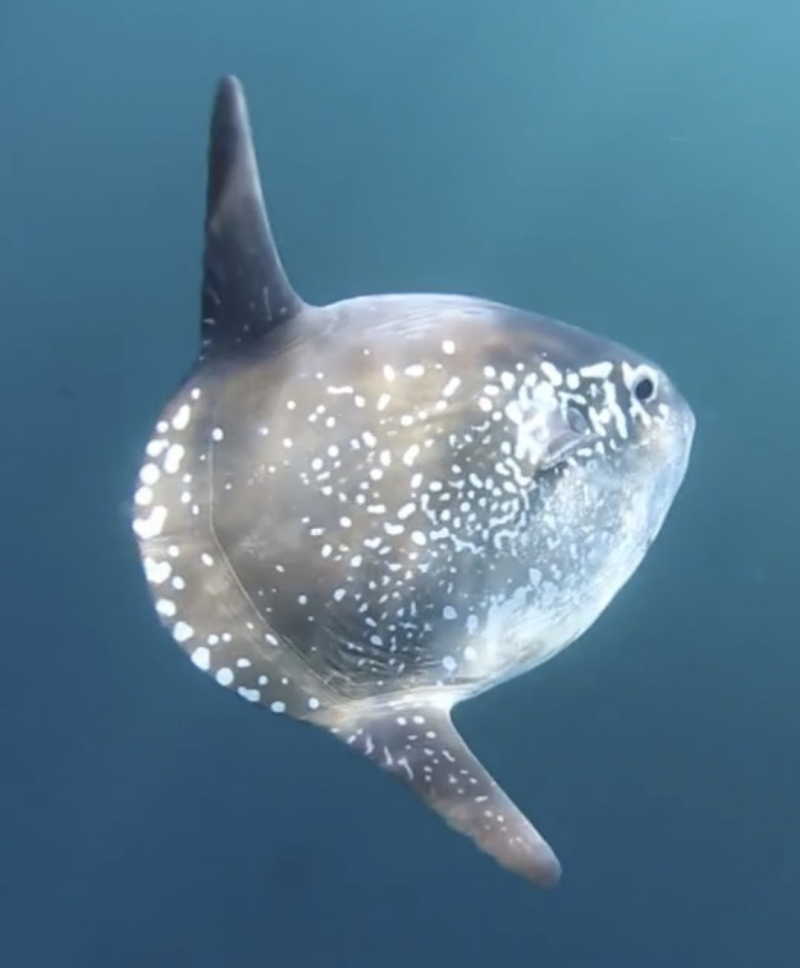
Wikipedia -
The Beluga Sturgeon, also known as the huge sturgeon (Huso huso), is a species of anadromous fish in the Acipenseriformes suborder of the sturgeon family (Acipenseridae). Primarily, the Caspian and Black Sea basins, as well as the old Adriatic Sea, are home to it. It ranks as the third-most enormous living species of bony fish based on maximum size. Overfishing and poaching have significantly decreased wild populations of belugas, which are heavily fished for the female's highly prized roe, known as beluga caviar.
The beluga sturgeon is the second-longest fish among all extant bony fishes, second only to the ocean sunfish (Mola sp) in terms of size (Regalecus glesne). It is the world's largest freshwater fish. As the largest actively hunting fish, the beluga competes with the great white shark (Carcharodon carcharias) and the Greenland shark (Somniosus microcephalus). The largest recorded female, weighing 1,571 kg (3,463 lb) and standing 7.2 m, was caught in the Volga Estuary in 1827. Another specimen was said to be 6.1 meters long and 1,220 kilograms (2,690 pounds) in weight. Other records for aging sturgeon exceed 5 meters (16 ft 5 inches). Among sturgeons, only the closely related Kaluga (Huso dauricus) can attain a similar size, with a maximum weight of 1,000 kg (2,200 lb).
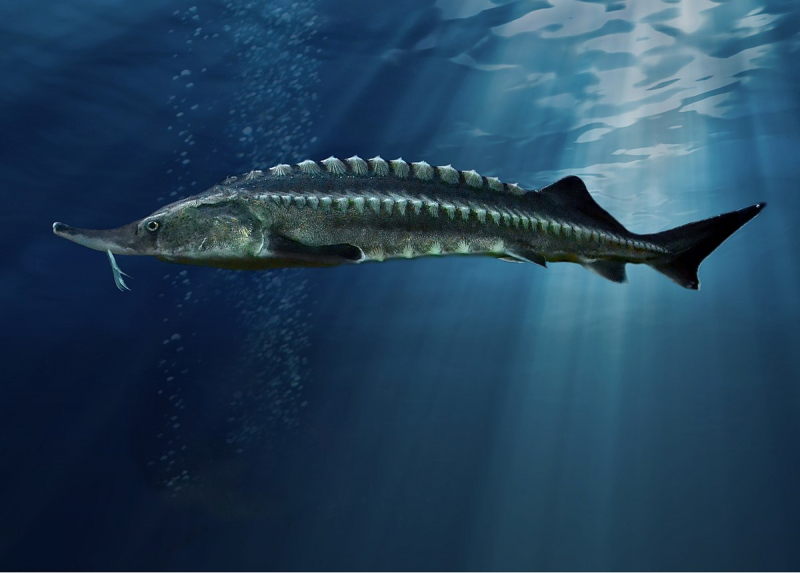
Wikipedia 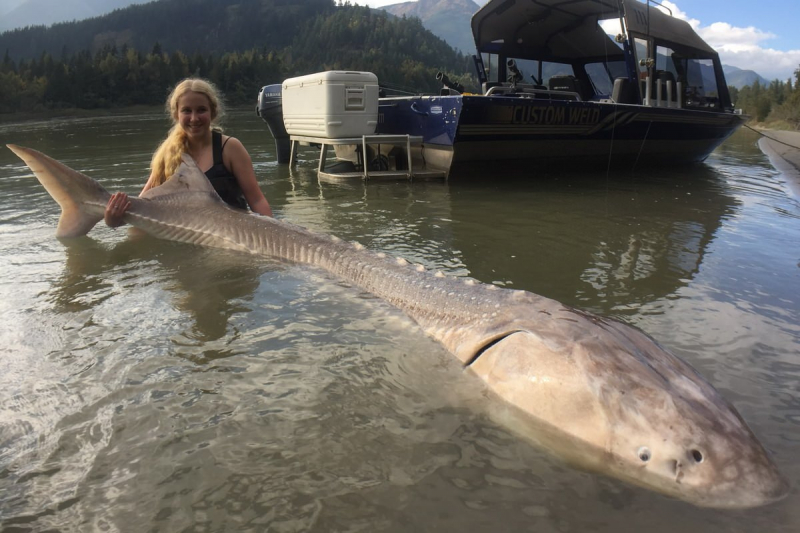
Rainmaker1973 Twitter -
One of the biggest ray species in the world, the Reef Manta Ray (Mobula alfredi) belongs to the family Mobulidae. It is the second-largest species of ray among those that are widely recognized, only being topped by the enormous oceanic manta ray (a currently unrecognized species from the Caribbean region also appears to be larger than the reef manta ray). Australian Museum director Gerard Krefft first described the species in 1868. In recognition of Alfred, Duke of Edinburgh, the first member of the British royal family to visit Australia, he gave it the name M. alfredi. It was initially classified as belonging to the genus Manta, but in 2017 it was modified to be included with the rest of the mantas.
Reef manta rays can grow to a maximum size of about 5.5 m, with a normal disc width of 3 to 3.5 m. The reef manta ray's position as a distinct species - which had long been mistakenly believed to be part of M. birostris—was only established in 2009. The Indo-Pacific region is home to a large population of reef manta rays, however, there are just a few specimens from the tropical East Atlantic and none from the West Atlantic or East Pacific. The reef manta ray is often found in shallower, more coastal settings than the huge oceanic manta ray, though local migrations have occasionally been seen.
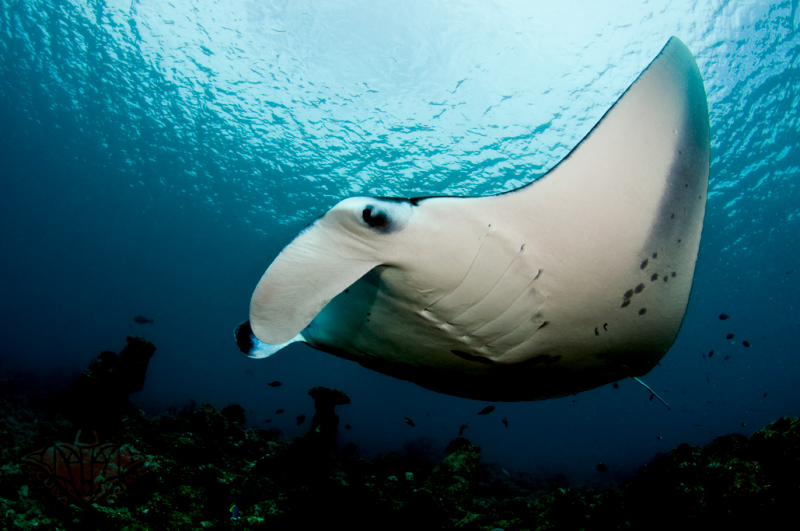
Wikipedia 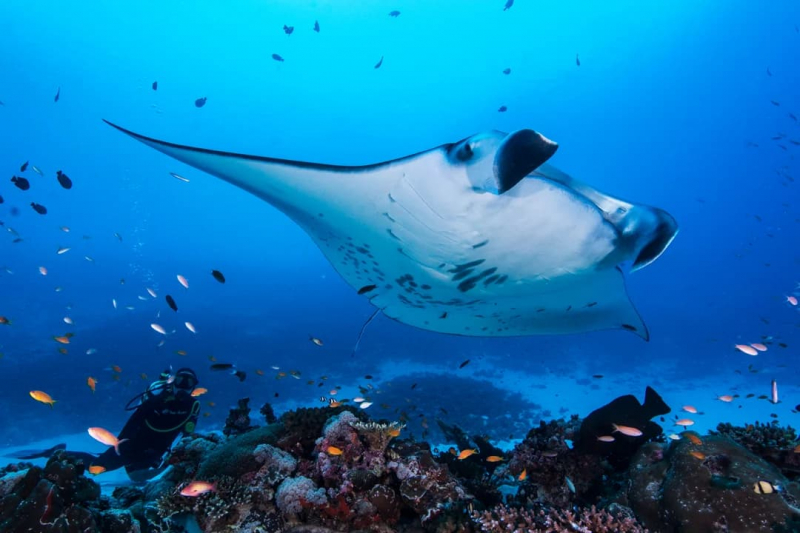
Save Our Seas Foundation

















